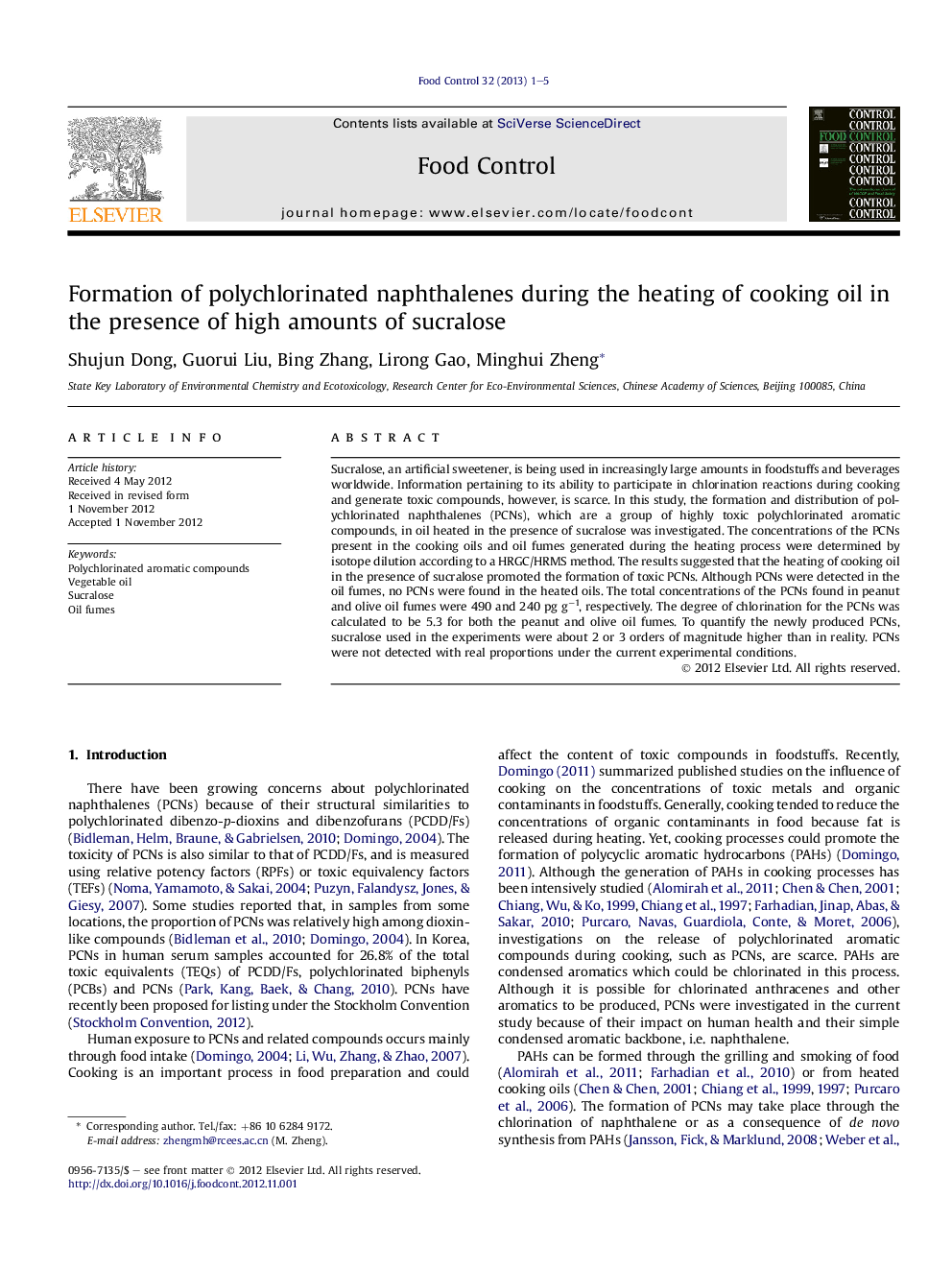| Article ID | Journal | Published Year | Pages | File Type |
|---|---|---|---|---|
| 6393042 | Food Control | 2013 | 5 Pages |
Sucralose, an artificial sweetener, is being used in increasingly large amounts in foodstuffs and beverages worldwide. Information pertaining to its ability to participate in chlorination reactions during cooking and generate toxic compounds, however, is scarce. In this study, the formation and distribution of polychlorinated naphthalenes (PCNs), which are a group of highly toxic polychlorinated aromatic compounds, in oil heated in the presence of sucralose was investigated. The concentrations of the PCNs present in the cooking oils and oil fumes generated during the heating process were determined by isotope dilution according to a HRGC/HRMS method. The results suggested that the heating of cooking oil in the presence of sucralose promoted the formation of toxic PCNs. Although PCNs were detected in the oil fumes, no PCNs were found in the heated oils. The total concentrations of the PCNs found in peanut and olive oil fumes were 490 and 240 pg gâ1, respectively. The degree of chlorination for the PCNs was calculated to be 5.3 for both the peanut and olive oil fumes. To quantify the newly produced PCNs, sucralose used in the experiments were about 2 or 3 orders of magnitude higher than in reality. PCNs were not detected with real proportions under the current experimental conditions.
⺠Heating of cooking oil and sucralose at relatively high temperatures produced PCNs. ⺠The newly produced PCNs were predominantly observed in the oil fumes. ⺠PCN homologs followed a declining trend from tetra- to octachloro-CNs.
